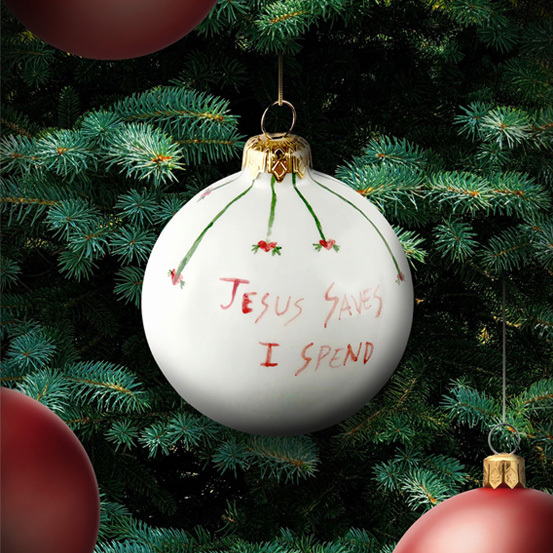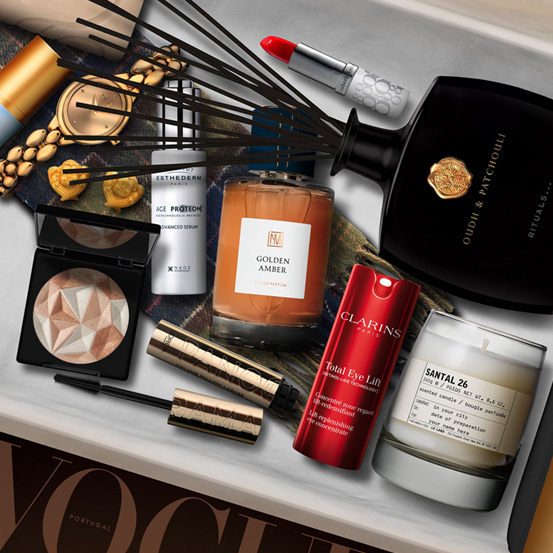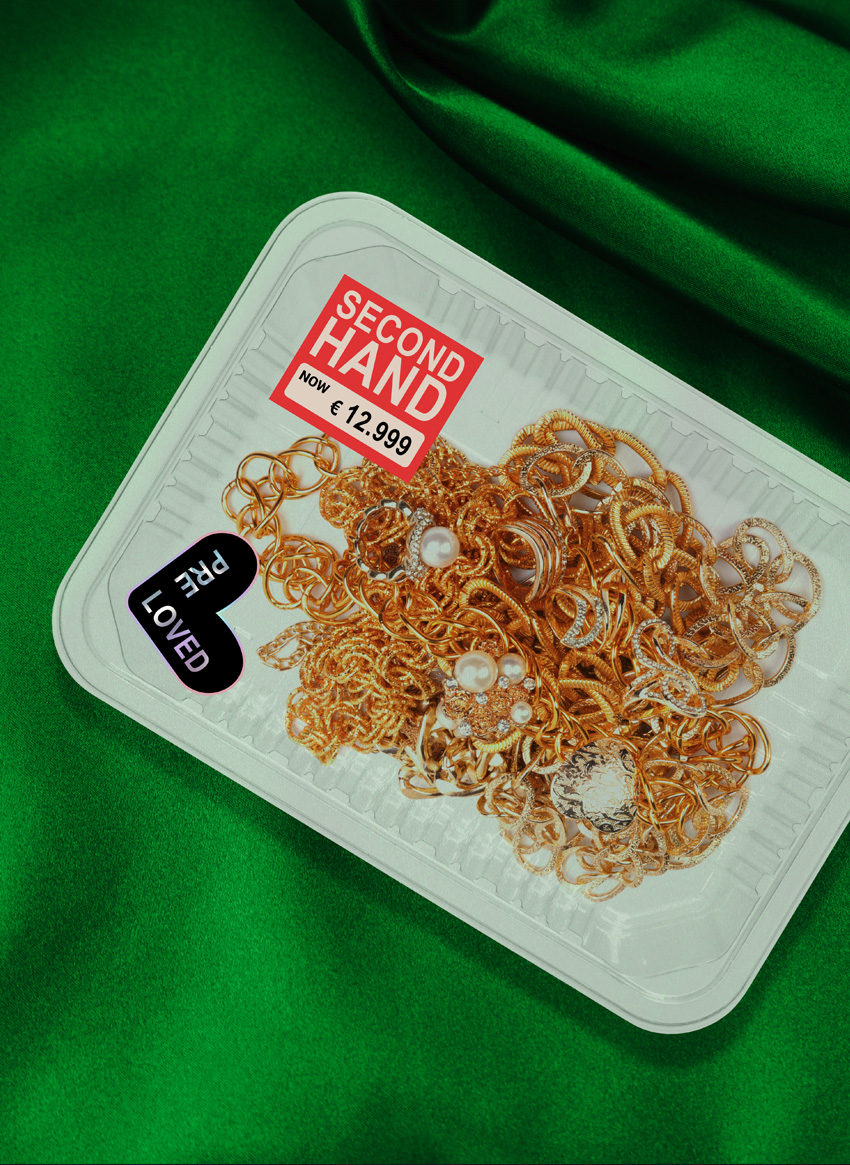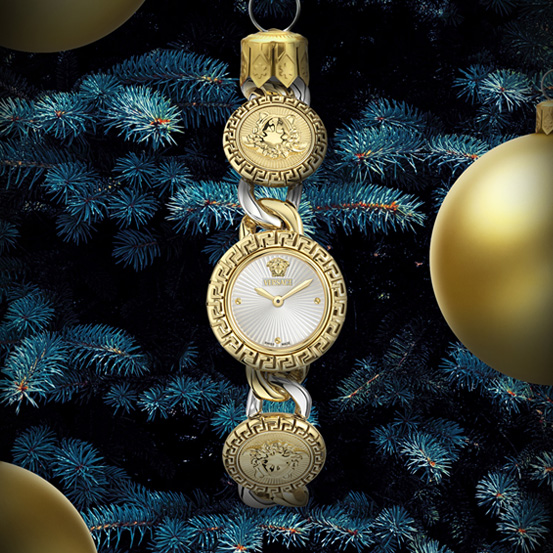Artwork by João Oliveira
Second-hand jewelry is the meeting point between luxury and history. However, navigating this world requires more than just good taste; it requires knowledge and intuition. Here's how to invest in pieces that are as authentic as they are special.
Second-hand jewelry is more than adornment; it's a piece of history that carries with it whispers of great occasions, deep romances and bygone eras. But entering the world of pre-loved treasures requires more than just an appreciation for beauty and luxury, and there are a number of factors to consider before buying. Authenticity is the cornerstone of any second-hand jewelry purchase and understanding the signs of trust is essential. First of all, it's important to look carefully for engraved seals, often hidden inside a ring or on the clasp of a necklace, for example. These small marks can reveal the purity of the metal - such as “18K” for gold or “925” for silver - and sometimes, with a bit of luck, even the identity of the jeweler. To find out if the gold or silver is real, you can test it with a strong magnet, bringing it close to the piece. If the magnet attracts the piece, then the metal is fake. The most renowned houses usually include their own imprints, which can be checked directly in the store. Equally important is craftsmanship: high-quality jewelry is impeccably finished, whether with symmetrical designs, precisely set gemstones or smooth edges. Rough workmanship or irregular settings can be warning signs of counterfeiting or inferior quality right away, and while slight wear can add charm and even be a testament to the life the piece has had, extensive alterations - such as resizing, replaced clasps or added stones - can detract from the piece's integrity or historical value.
Gemstones are the soul of many jewels, and their authenticity obviously has a significant impact on their value. Natural gems often have slight inclusions that attest to their organic origin, while synthetic ones tend to look too perfect. Requesting a gemological report from a qualified institution can confirm the identity, origin and quality of a stone. When it comes to evaluating diamonds in particular, the four C's - cut, color, clarity, and carat weight - are the reference criteria for determining quality and value, with the “color” and “clarity” elements governed by their own scale. There are some common tests that can be carried out to verify the veracity of a diamond, and the most convenient of all is the fog test: hot air is blown over the stone to see if it fogs up - if so, good news, the diamond is real. These tests don't exclude professional authentication, of course, but they are a good trick to use at antiques fairs, for example. It's also worth mentioning that the cut is probably the most important of the four C's, as it directly affects a diamond's ability to reflect and refract light. Precise angles, symmetry and polish are essential, so it's best to avoid shallow or deep cuts that can leak light and diminish the diamond's brilliance. Carat weight indicates the size of a diamond, but bigger doesn't always mean better. A smaller, well-cut diamond often outperforms a larger diamond that doesn't meet other requirements, but it's worth noting that carat weight affects the value of the stone exponentially. When buying a second-hand diamond, it's important to ask for its grading certificate and check that it hasn't been artificially altered or enhanced either. On the other hand, rubies, sapphires and emeralds are the “holy trinity” of colored stones. Rubies shine best in vibrant, untreated reds, while sapphires offer a spectrum of tones, with deep royal blues being the most appreciated. In the case of emeralds, inclusions add charm, but stones with excessive flaws that greatly affect their durability should be avoided. Although these gems are the most common, it's worth exploring the huge universe of precious stones available, as you may find something less conventional, but just as captivating. Not all that glitters is gold, and a piece doesn't automatically become excellent because it contains a showy stone.
Knowing where to buy is just as important as knowing what to buy. Established auction houses are trusted havens for acquiring authenticated treasures, offering detailed provenance and expert appraisals. Online platforms such as Vestiaire Collective, The RealReal and Catawiki are also reliable sources, combining convenience with rigorous authentication processes. For those who prefer the thrill of antique fairs or independent markets, it's best to establish relationships with reputable dealers. Price is another area where discernment is key. The cost of second-hand jewelry is influenced by rarity, condition, brand reputation and era. Of course, iconic models - such as Cartier Love bracelets or Van Cleef & Arpels Alhambra necklaces - retain their allure and fetch high prices, so it's best to keep expectations realistic. In any case, research into comparable sales is essential to determine whether a price is fair. In some contexts, such as antiques fairs, negotiation is part of the experience, but it should be approached with respect and informed confidence.
When you find a piece that you identify with, it's essential to look after it properly so that it remains a treasure for years to come. To avoid risks, jewelry should be stored separately in boxes with a soft lining and cleaned thoroughly with suitable solutions. Whenever necessary, pieces should be checked by a professional jeweler - for example to change a clasp - and, in the case of vintage items, specialists familiar with older techniques and materials are the names to refer to, avoiding damage whenever possible. Investing in second-hand jewelry is more than just buying something beautiful; it involves work, research and maintenance. However, each antique ring, vintage bracelet or heirloom necklace carries with it a story waiting to be continued and, by wearing these treasures, we are not just adorning ourselves, but carrying on a legacy that fuses history and art.
Translated from the original on "What's Next" issue, published December 2024. Full credits and stories in the print issue.
Most popular
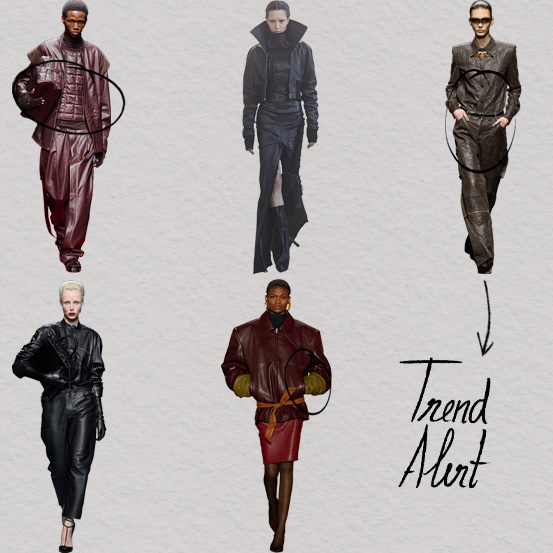
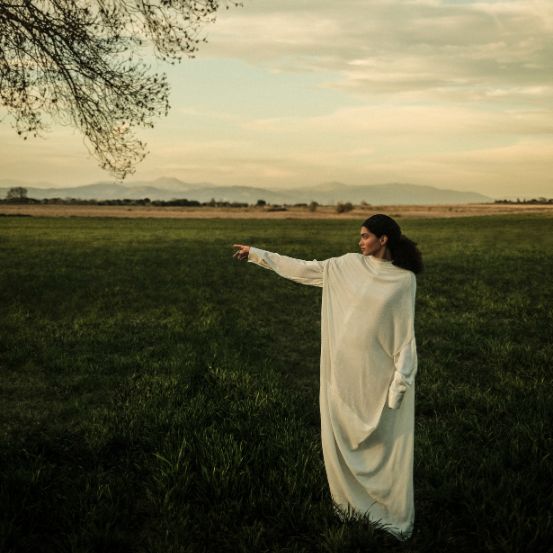
Relacionados
.jpg)

